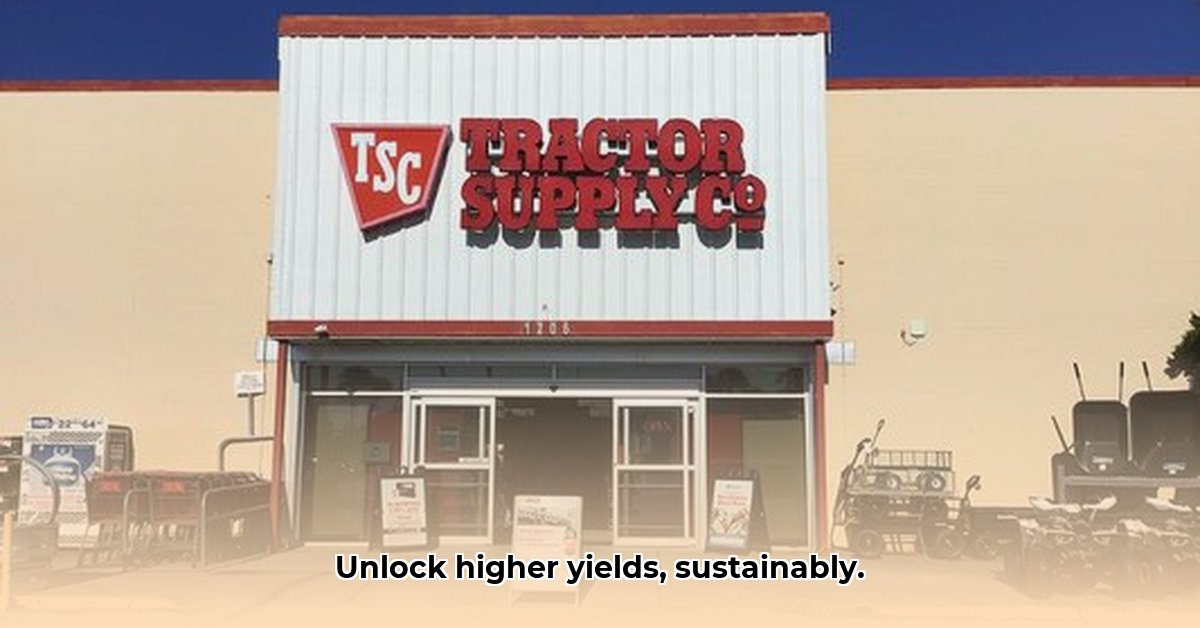
Precision Farming: Farming Smarter, Not Harder
Precision farming leverages technology to optimize resource use, mimicking a surgeon's precision rather than a shotgun approach. By using GPS, sensors, and specialized software, farmers can target inputs—fertilizers, pesticides, water—only to areas requiring them. This targeted approach reduces waste, saves money, and minimizes the environmental impact, making it a cornerstone of sustainable agriculture. But how much can precision farming really improve efficiency? Studies show that variable-rate technology alone can reduce fertilizer application by up to 20%, significantly decreasing environmental impact while potentially boosting yields.
The Tech Toolkit of a Modern Farmer
Several technologies power precision farming:
Variable Rate Technology (VRT): This "smart" system adjusts inputs based on real-time field conditions. (Think of it as a personalized prescription for each section of your farm.)
GPS Guidance Systems: These provide highly accurate tractor navigation, eliminating overlaps and ensuring complete field coverage. (It's like having an expert driver built into your machinery.)
Yield Mapping: This detailed record tracks harvest yields section by section, revealing areas for improvement in future seasons. (It's a feedback loop for continuous optimization.)
Remote Sensing (Drones & Satellites): Aerial imagery provides a bird's-eye view of crop health, allowing for early detection of problems. (Think of it as early warning for potential crop stressors.)
"Precision farming is not just about technology; it's about data-driven decision making," says Dr. Anya Sharma, Agricultural Engineering Professor at the University of California, Davis. "By integrating data from multiple sources, farmers can gain a much clearer understanding of their fields and make informed management decisions that benefit both profitability and sustainability."
Isn't it remarkable how technology can pinpoint areas needing attention, leading to targeted interventions? This minimizes resource consumption and ultimately reduces our environmental footprint.
Data: The Heart of Smart Farming
Precision farming hinges on data. Sensors gather real-time information on soil moisture, nutrient levels, and plant health. Sophisticated software analyzes this data, providing farmers with customized recommendations. This information empowers farmers to make informed, timely decisions, maximizing efficiency and minimizing resource waste. One such benefit often overlooked? Reduction in pesticide usage. Targeted applications, guided by data, dramatically reduce overall pesticide needs.
Putting Precision Farming into Action: A Step-by-Step Guide
Ready to embrace smart farming? Here's a phased approach:
Assess Your Farm: Identify strengths, weaknesses, and areas for improvement. This initial assessment is critical for targeting your efforts.
Invest Wisely in Tech: Research available technologies and choose solutions aligning with your needs and budget. Consider financing options, and don't hesitate to start small and scale up as you gain experience.
Train Your Team: Invest in thorough training for your staff, ensuring proficient operation and maintenance of new equipment and software.
Integrate Your Systems: Ensure seamless communication and data flow between all your technology and software to maximize efficiency.
Monitor and Adapt: Continuously monitor results, analyze data, and adjust strategies based on the feedback you receive. Sustainable agriculture is an ongoing learning process.
The Challenges and Rewards of Smart Farming
While the benefits are significant, potential challenges must be addressed:
| Challenge | Mitigation Strategy |
|---|---|
| High Initial Investment | Explore government grants, loans, and leasing options. |
| Data Management | Invest in user-friendly software and data management systems. |
| Technology Adoption | Access training programs and seek technical support. |
| Data Interpretation | Leverage data analytics tools and expert advice. |
The Future Looks Bright (and Green)
Precision farming is an indispensable tool for creating a truly sustainable agricultural system. It empowers farmers to enhance productivity while minimizing the environmental footprint of food production. The continuous development of advanced technologies will only further enhance the efficiency and effectiveness of these sustainable methods making the future of food production brighter, both for the farmer and the planet.